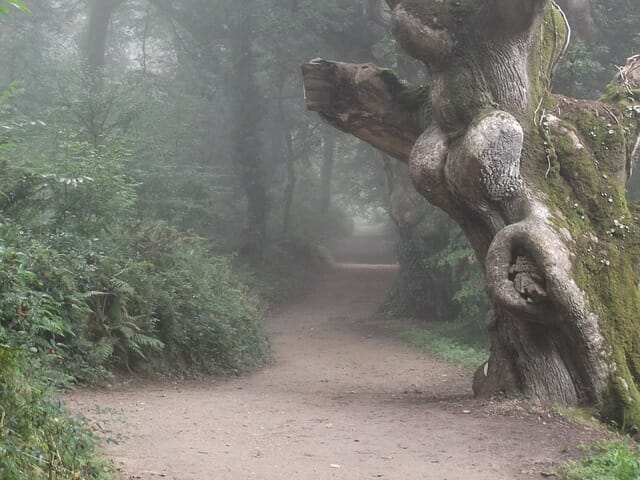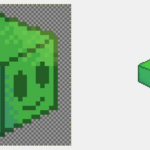Table of contents
What is a Critical Path Walkthrough?
Wikipedia says a critical path is “the longest necessary path through a network of activities”. In game terms, it’s the longest path through your game a player needs to take to complete your game. However, I like to look at it another way: what’s the shortest route your player can take to see the end screen?
Before you leave the planning stages of your game, take a few minutes to plot its shortest course. This surfaces important information about your design and gives you a chance to make course corrections before investing time in coding and game assets.
Why Create a Critical Path Walkthrough?
Walkthroughs help you understand your own game better from a player’s point of view. It’s an objective look at your creation – normally tough to do – and so a valuable tool in your dev tool belt.
Test Progression
Use your walkthrough to play your game on paper from just a progression point of view to see the experience you’re about to unleash. For example, does your walkthrough tell a great story? Or is it disjointed, boring, or maybe incomplete?
Journey Map
A walkthrough works like a map. Travel your game with your map in hand to see what you’re putting your players through. Does gameplay progress smoothly, or does it feel a bit random and confusing? Are there spots of friction, no fun zones, and WTF moments?
Find Gaps
Look for gaps. Why would players leave the planet by buying the worst ship when their coffers brim from the previous encounter? With the optional sliced away like cellulite, can players meet a stage boss too soon? Walkthroughs show you the minimum route, which means players might not have the prereqs they need to progress, or they might have too much power too soon and play unchallenged.
Discover Deads Ends
Discover dead ends, infinite loops, and cul de sacs. Your map will reveal these game killers and more. Even on paper, you can spot grinding or loops. I recently played Steve Jackson’s CYA book, The Warlock of Firetop Mountain. After crossing the river I got stuck in a loop, was hitting the same four-way intersection, and couldn’t penetrate deeper, even though I tried every exit. Frustrating.
Test Transitions
Something underrated in games is transitions. These are subtle, but so important. A great transition frames upcoming gameplay. It sets the right expectations by the signals it sends. If your game fails to deliver, or serves up something else, players will bail. Your design might seem logical with a smooth progression. Your cut scenes all make sense. But test this against your critical path to see if players can do things in the wrong order, miss transitions, or fork the wrong way after great transitions.
Find Design Bugs
Bugs where players can make not one more step in your game without restarting will kill. They kill the fun. And they kill your game. Walk your map and test each progression. Do players have the info and motivation they need to continue? Do their toons have the equipment, abilities, and power to progress? Or do surprise shortcuts put people too far into your game too early, unprepared?
Time Estimate
Something a bit more prosaic, a critical path walkthrough gives you an estimate of minimum game play time. It also gives you time per stage, letting you know if there are uneven or bizarre pacing moments.
Marketing
And something not often thought of, a walkthrough helps promote your game. Don’t wait to see if a fan creates one. Do it yourself and spread the word it exists. This will help stuck players, add credibility to your title, and give you more content online for people to find and discover your game.
How to Create a Critical Path
Only document gameplay essential to finishing the game. What’s mandatory to reach the end screen? Cut away the optional.
Step 1
Divide your game into sections. Acts, chapters, levels, screens, whatever logical way you’ve chunked out your game.
Step 2
Draw the sections. Make a map.
Start with your opening encounter or screen. Then draw circles for each new major game section, in order of critical path play. Connect circle with lines where players can move from one section to another.
Source: http://en.wikipedia.org/wiki/Critical_path_method
Step 3
Now, walkthrough your game at this 10,000 foot level. Are all essential acts, chapters, levels, and screens on the critical path? If so, what does the progression look like?
Anything missing? Look for gaps, bypasses, and stuff buried in optional play that needs to migrate into the critical path.
Any waste? Needless excess also kills fun.
Any loops or frustrating dead ends?
What’s the story like? Grab an empty doc and write the terse story of the critical path. Then decide if it’s complete and interesting, or if you need to add or subtract to improve it.
How’s the pacing feel?
At this most simple view, you can fix a lot with your design before wasting resources fiddling with the smaller bits.
Step 4
For each step in your map, note dependencies. What does the player and toon need to progress?
Also top line what players must do in each scene or screen. Step back and see how this sits with you. Look for repetitive play, such as two similar quests back-to-back.
Step 5
Now we get granular. Break sections and levels into their distinct screens, locations, events. It might be room-by-room, or a more abstract screen or encounter series. Use your map, and break its areas into their atomic gameplay scenes.
Step 6
Step back again. Do a quick walkthrough of each section. Repeat the checks in step 3 to spot bad gameplay.
Also check logical end points such as milestones, quest completions, level-ups, and achievements. You’re looking for logic problems, dependency issues, and pacing. For example, does an important quest happen too fast while a minor quest goes on for too long? Does the player reach a milestone in gameplay that’s out of synch with story or toon advancement?
Are there multiple or parallel paths through your game? If so, challenge the design of each. Would your game be better if you merged sub-critical or non-critical paths? Would your game improve if you cleaved a certain part into optional gameplay?
Step 7
Now we’re getting closer to the traditional walkthroughs you see posted online or written in books. Plot out the specific actions players must take to walkthrough each screen, location, scene, encounter, or event.
In sandbox situations, run through the basic actions players can take. For example:
Move
Talk
Attack
Open/Search/Smash/Close
Use skill or ability
Test these core actions against expected current toon states. Look for problems and fix. Also look for repetitive tasks, grinding, and dull gameplay.
Step 8
Estimate the time each encounter will take to complete. Add times up to get an estimated critical path total. How do you feel about that time? Give it the Goldilocks treatment: too much, too little, or just right? View this through player experience and game dev and resource requirements lenses.
Tip: When you build and run your game, time play again to see how accurate your initial estimates were. Use this feedback to improve your next estimates.
Build Walkthroughs Before Graphics & Coding
A critical path walkthrough of your game, whether done on paper or in charting software, helps you see your game more objectively, from an experiential perspective. Focusing on what’s essential to see your end screen gives you feedback on how your game flows, how your story matches up to toon and gameplay advancement, and if the minimum sequence of play creates gaps or dead ends.
This diagnostic tool will save you time and money because you can spot problems in moments and fix them before digging into coding and asset pipelines.
If you update your critical path walkthrough again just before you ship, as a final check, you can also publish the walkthrough online as another marketing tactic to draw more attention to your game.
Try it out and let me know how it goes!
This post was written by Johnn Four, founder of RolePlayingTips.com. Johnn focuses on tabletop RPG gameplay, especially on how to be a better game master.






